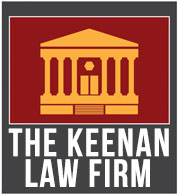Train travel has long been a vital component of Georgia’s transportation infrastructure, linking cities, towns, and communities across the state. Whether transporting passengers or freight, trains play a crucial role in maintaining the flow of commerce and the movement of people. However, with the power and speed of trains comes the potential for devastating accidents. A critical factor in ensuring the safety of train operations is the regular maintenance of tracks. Without proper track maintenance, the risk of accidents increases, potentially leading to catastrophic consequences. In this discussion, we will explore the importance of regular track maintenance in preventing train accidents in Georgia and the measures that should be taken to maintain safety on the rails.
Understanding the Risks of Train Travel in Georgia
Georgia’s extensive rail network is an essential part of the state’s economy and transportation system. The vast network of tracks crisscrosses the state, connecting major cities like Atlanta, Savannah, and Augusta, as well as smaller communities. While trains are generally considered a safe mode of transportation, they are not without risks. Train accidents, though relatively rare, can be particularly devastating due to the sheer size and speed of trains. The most common types of train accidents include derailments, collisions, and accidents at crossings.
Derailments occur when a train leaves the tracks, often due to track defects or obstructions. Collisions can happen between trains or between a train and a vehicle or pedestrian at a crossing. Both types of accidents can result in significant property damage, injuries, and even fatalities. In many cases, these accidents can be traced back to issues with track maintenance. Poorly maintained tracks can lead to derailments, while malfunctioning signals and other track-related equipment can contribute to collisions. Given the potential for loss of life and property, the importance of regular track maintenance cannot be overstated.
The Role of Track Maintenance in Preventing Accidents
Regular track maintenance is a cornerstone of train safety. Tracks are subjected to constant wear and tear due to the heavy loads they carry and the frequent passage of trains. Over time, this wear can lead to a variety of issues, including track misalignment, broken rails, and worn-out components. If left unaddressed, these problems can create dangerous conditions that increase the likelihood of an accident.
Track maintenance involves a range of activities designed to keep the tracks in optimal condition. These activities include inspecting the tracks for defects, repairing or replacing damaged components, and ensuring that all track-related equipment is functioning properly. Regular inspections are essential for identifying potential issues before they lead to an accident. Maintenance crews use a combination of visual inspections, specialized equipment, and technology to detect problems such as cracks, misalignments, and worn-out components.
One of the most critical aspects of track maintenance is ensuring that the rails are properly aligned. Misaligned tracks can cause a train to derail, especially at high speeds. Additionally, the condition of the rail joints, where two sections of track meet, is crucial. Loose or damaged rail joints can also lead to derailments. Regular maintenance ensures that these and other potential issues are addressed promptly, reducing the risk of accidents.
The Consequences of Neglecting Track Maintenance
Neglecting track maintenance can have severe consequences, both in terms of safety and financial impact. When maintenance is not performed regularly, the likelihood of track defects increases, and with it, the risk of accidents. Train derailments and collisions can result in significant loss of life and injuries, not only to train passengers and crew but also to individuals in the surrounding areas. Moreover, train accidents often cause extensive damage to property, including the train itself, cargo, and nearby infrastructure.
In addition to the human and material costs, train accidents can have far-reaching financial implications. Cleanup and repair costs can be substantial, and there may be legal and regulatory consequences for those responsible for maintaining the tracks. Rail companies may face lawsuits from injured parties or from the families of those killed in accidents. Furthermore, accidents can lead to service disruptions, causing delays in the transportation of goods and people, which can have a ripple effect on the economy.
Neglecting track maintenance can also erode public trust in the safety of train travel. When accidents occur, especially if they are found to be due to poor maintenance, people may become wary of using trains, leading to a decline in ridership. This decline can, in turn, result in financial losses for rail companies and reduced investment in the rail infrastructure. In the long term, the failure to maintain tracks adequately can undermine the viability of rail travel as a safe and reliable mode of transportation.
Verdicts & Settlements
Regulatory Framework and Responsibilities
In Georgia, as in the rest of the United States, rail safety is governed by a comprehensive regulatory framework. The Federal Railroad Administration (FRA) is responsible for overseeing the safety of the nation’s rail system, including the maintenance of tracks. The FRA sets standards for track maintenance and conducts inspections to ensure compliance. Rail companies are required to adhere to these standards and to perform regular maintenance on their tracks.
The responsibility for track maintenance in Georgia falls primarily on the rail companies that own and operate the tracks. These companies must ensure that their tracks meet the safety standards set by the FRA and that maintenance is performed regularly and thoroughly. However, the state government also plays a role in rail safety. The Georgia Department of Transportation (GDOT) works with the FRA to monitor rail safety and to address any issues that may arise.
Despite the regulatory framework in place, ensuring the safety of Georgia’s rail system requires ongoing vigilance. Rail companies must be proactive in their maintenance efforts, regularly inspecting their tracks and addressing any defects that are found. In addition, the FRA and GDOT must continue to monitor compliance and take enforcement action when necessary. This collaborative effort between rail companies and regulatory agencies is essential for preventing train accidents and ensuring the safety of Georgia’s rail network.
The Importance of Investing in Track Maintenance
Investing in track maintenance is not only a safety measure but also a sound financial decision. Regular maintenance can prevent costly accidents and reduce the need for expensive repairs in the future. By addressing track defects early, rail companies can avoid the more significant costs associated with accidents, including legal fees, settlement payments, and the loss of revenue from service disruptions.
Moreover, investment in track maintenance contributes to the overall reliability and efficiency of the rail system. Well-maintained tracks allow trains to operate at higher speeds and with greater precision, reducing travel times and improving service quality. This reliability can enhance the competitiveness of rail as a mode of transportation, attracting more passengers and freight customers.
In Georgia, where rail plays a crucial role in the state’s economy, investment in track maintenance is particularly important. The state’s rail network supports a wide range of industries, from manufacturing to agriculture, and any disruption to this network can have significant economic consequences. By investing in track maintenance, Georgia can ensure that its rail system remains a vital and reliable component of its transportation infrastructure.
Technological Advancements in Track Maintenance
Advances in technology have made it possible to perform track maintenance more effectively and efficiently. Modern track maintenance techniques use sophisticated equipment and technology to detect and address potential issues before they lead to accidents. For example, ultrasonic testing can detect internal defects in rails that are not visible to the naked eye. Similarly, laser-based systems can measure track geometry with high precision, identifying misalignments that could lead to derailments.
In addition to these diagnostic tools, technology is also being used to improve the efficiency of track maintenance. Automated track inspection vehicles can cover large stretches of track in a short amount of time, providing detailed data on the condition of the tracks. This data can then be used to prioritize maintenance activities, ensuring that the most critical issues are addressed first.
These technological advancements have the potential to significantly enhance rail safety in Georgia. By adopting modern track maintenance techniques, rail companies can reduce the risk of accidents and improve the overall safety of the rail system. However, it is important to note that technology is only one part of the equation. Regular inspections and maintenance by trained personnel remain essential for ensuring the safety of the tracks.
The Role of the Community in Rail Safety
While rail companies and regulatory agencies are responsible for maintaining track safety, the community also has a role to play in preventing train accidents. Public awareness of rail safety issues can help reduce the risk of accidents, particularly at crossings. Communities can work with rail companies and government agencies to identify and address potential hazards, such as poorly maintained crossings or areas where trespassing on tracks is common.
Education is a key component of community involvement in rail safety. By educating the public about the dangers of trespassing on tracks and the importance of obeying crossing signals, communities can help reduce the risk of accidents. Schools, local governments, and community organizations can all play a role in promoting rail safety and encouraging safe behavior around tracks.
In addition, community members can report any concerns they have about track safety to the appropriate authorities. If a track appears to be in poor condition or if a crossing signal is malfunctioning, it is important to notify the rail company or local government so that the issue can be addressed promptly. By working together, communities, rail companies, and government agencies can help ensure the safety of Georgia’s rail system.
The importance of regular track maintenance in preventing train accidents in Georgia cannot be overstated. With the state’s rail network playing a crucial role in its transportation infrastructure, the safety and reliability of the tracks are paramount. Through regular maintenance, rail companies can identify and address potential issues before they lead to accidents, ensuring the safety of passengers, crew, and the public.
Neglecting track maintenance can have devastating consequences, both in terms of human lives and economic impact. By investing in maintenance and adopting modern technologies, Georgia’s rail system can remain a safe and efficient mode of transportation for years to come.
If you or a loved one has been affected by a train accident in Georgia, it is essential to seek legal assistance from a law firm with experience in handling such cases. At Keenan Law Firm, we are committed to advocating for the rights of those impacted by train accidents. Our experienced team is here to help you navigate the complexities of your case and ensure that you receive the compensation you deserve. Contact us today for a consultation and let us help you protect your rights and secure your future.










